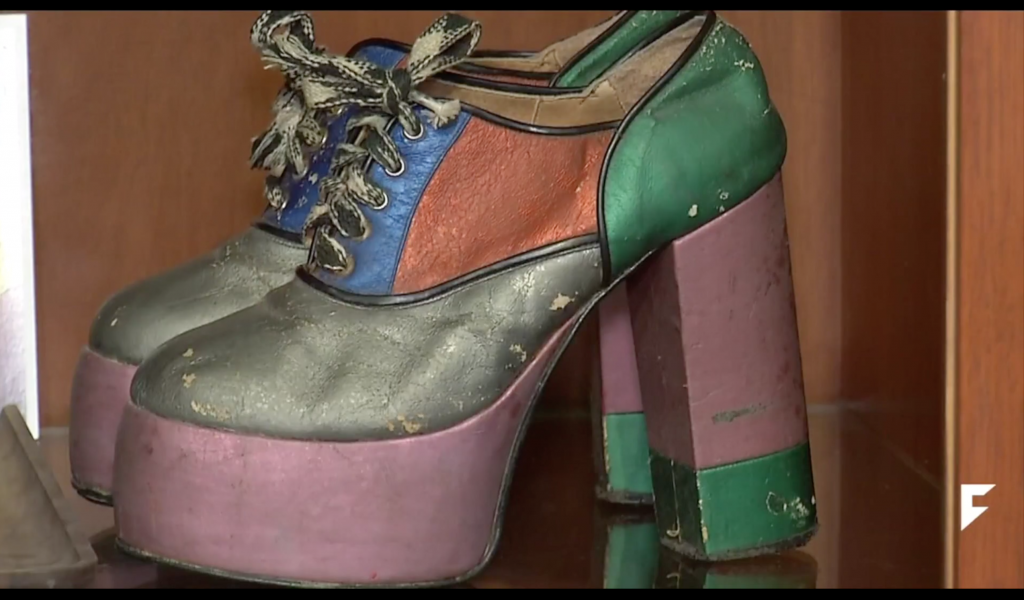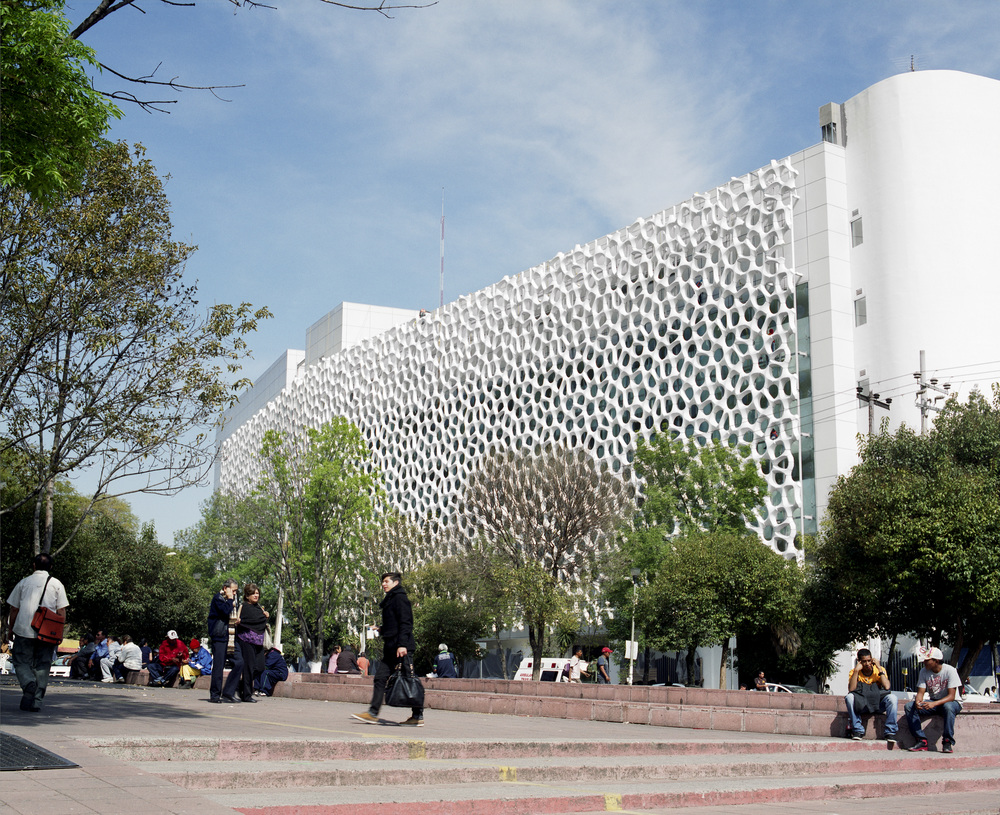The latest fashion trend sweeping Mexico is a boom in second-hand clothing. Valeria Leon explains how the rise of ‘resale’ of used goods is slowly breaking stigmas and bringing people together for the greater cause of thrifty sustainability. A recent boom of vintage-clothing boutiques in Mexico’s capital and surrounding cities is quickly changing the country’s retail landscape. In addition, a renewed effort to exchange second-hand goods directly is gaining favor at bazaars run by college students who wish to raise awareness of the wastefulness of consumer society. Although Mexico has remained as a relatively minor market, the recent rise of resale is helping break old stigmas about wearing reused clothing. Full story here: https://www.univision.com/univision-news/recent-boom-of-used-clothing-changing-mexicos-retail-landscape-video
A cold beer may soon be a hard thing to come by in Mexico City. Valeria Leon explains why some local lawmakers have declared war on the cold beverage, leaving many residents unpleased with the new measure. https://fusion.tv/video/593518/lawmakers-to-ban-cold-beer-in-mexico/?fbclid=IwAR1HHF8O_aGH2oJ5yzezR0kLoHkTPn36yDRMwANwMzoxulg6hHREIeydfm0
A retired Mexican wrestling star’s foray into the world of gastronomy in the working-class neighborhood “Doctores” and has become all the rage among the country’s young wrestlers. A wrestler’s career is tough and can come to a sudden end at any moment due to injury. But former wrestler, Guadalupe Fuentes also known as “Babyface” found a way to spice things up outside the ring by creating a fusion of yakimeshi- which is a Japanese friend rice— with a bit of Mexican zing. The 72-year old man looms above this street stand every day. He can barely move because of the injuries he suffered while wrestling. Full Story on FusionTV: https://www.univision.com/univision-news/a-mexican-wrestling-star-went-from-the-ring-to-the-kitchen-video
Mexico boasts an array of medicinal plants. They grow naturally in rural areas, where communities have little access to formal healthcare facilities. eight out of 10 people use traditional medicine. An essential part of Zapotec culture is using plants for medicinal purposes. Zapotec healer Isabel Jimenez wants to pass on her skills and knowledge to younger generations. https://www.youtube.com/watch?v=RMNju_LjBiE In an effort to protect natural vegetation, threatened by accelerated urban growth, the National Autonomous University of Mexico has set up a digital library, that lists more than 3,000 indigenous plant species. The Sonora Market in Mexico City is the largest medicinal plant market in the country. More than 300 different species are available for sale here. Full Story here: https://www.trtworld.com/video/news-videos/mexico-medical-plants-mexico-is-renowned-for-the-indigenous-medicinal/5ca998775788bd644f8bffb1
Mexico City is one of the world’s biggest commuter cities. But female passengers say their rides are filled with constant risk of sexual harassment. They report cat-calling, groping and even rape and kidnapping. But as Valeria Leon reports, many still refuse to confront the problem head-on. Some women report they’ve been harassed at a very young age. They say it’s so common that women grow used to it. https://www.youtube.com/watch?v=0p1I_kXr1kA Mexico City’s government introduced women-only cars in 2008. Through Facebook and Whatsapp groups women share information about where attacks happen most often. They say it helps them reduce the risk of riding public transport. The first recorded study on sexual assault was published ten years ago by Fabiola Zermeño from a local NGO. The results of a follow up study in 2017 revealed that the number of sexual assaults in the subway system hasn’t gone down over the last decade. The…
In the Mexican border city of Mexicali, local residents are still getting used to the massive flow of migrants who’ve found themselves there, waiting for an opportunity to enter the U.S. The two groups are trying to co-exist, hoping for an eventual end to the turmoil in their city. https://fusion.tv/video/592800/turmoil-in-mexicali-as-the-massive-flow-of-migrants-continues/?fbclid=IwAR3-sbRKZjdyVwZnWPHyZA9VqSoFFVurvZgFsjR8nv7Q56Dx4ewwPFWSy-o In the capital city of Baja California, the new migrants from Central America have learned from the olds ones: in this case, they’re Mexican Deportees. We spoke with 22- year-old Brian was deported to Mexicali after living in Yuma Arizona for two decades. Now he helps the newcomers adapt to a different culture. The arrival of migrant caravans has created an urgent need for temporary housing. Six months ago, Kevin inaugurated “The Yellow Castle” which provides shelter and food for migrants. But he admits that the incorporation of the newcomers hasn’t gone smoothly. Most of the Central American migrants have the will to…
Tijuana topped the list with 138 killings per 100,000 Tijuana residents, averaging about seven per day. A barbed wire was installed by US authorities to reinforce the border in response to the arrival of thousands of migrants traveling in caravans. On the Mexican side of the border, they worried most about the rise in violence. Yanira is a Salvadoran refugee, she has been living in a shelter for two months. She only leave this place to go to her asylum interview appointment in San Diego. She’s afraid to be on the streets in Tijuana. FULL STORY HERE: https://www.univision.com/univision-news/tijuana-ranked-as-the-most-violent-city-in-the-world-video
Immigration officers are particularly hard on women traveling alone with their children. Women and children are the ones who suffer the most in these caravans. But what drives them to continue on their arduous journey north is a passionate desire to provide their children with better, safer lives. As part of Univision’s week-long series looking at the border crisis, Valeria Leon reports on the journey for the mostly Central American migrants who have joined the caravans heading to the United States. It’s a challenging trip for anyone, much more so for single mothers who decide to make the trek with their children. Full story here: http://uni.vi/Njty101x2DL
This is the 4th migrant caravan to arrive in Mexico City in less than a year. Out of the 3,000 migrants that left Honduras only 350 made it here. https://fusion.tv/video/592708/mexico-implementing-stricter-measures-to-deal-with-migrants/?fbclid=IwAR2p74i6Ewy12Py0dw4WhvIFdu7maNeMVTSs9ceeKAmwTLs2Vxe0SC809Oo In Mexico City, the government is implementing stricter measures to deal with the flow of migrants coming into the country from Central America. Many of these policies took effect after the arrival of the last caravan and could offer a preview of Mexico’s new attitude towards migrants passing through the country. At the migrant shelter in Mexico City, Central Americans feel lucky to have gotten as far as they have, considering both the distance and constant abuse they received from immigration officers. Mexico has become a destination for migrants traveling in caravans. In response to the wave of immigration the Mexican government has aimed to control the illegal crossers. Mexico’s popularity as a destination, rather than a mere transit route, for…
Mexico City is the global king of smog. But the structure surrounding this building – which contains titanium dioxide that activates with sunlight- reduces the impact of air pollution. The technology behind this smog-eating building was developed by Berlin-based design firm Elegant Embellishments. This was a government initiative fully funded by the Ministry of Health. https://www.youtube.com/watch?v=mUADjHO8zrc&t=24s Construction has one of the largest carbon footprints in the world. In this context, ecological awareness becomes essential to building a in many of the world’s most polluted cities.









